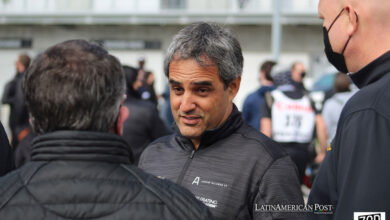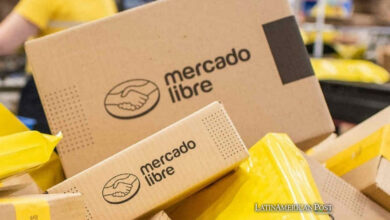“Keep cool and carry on”: Let’s continue protecting the ozone layer
Not caring for the ozone layer endangers the existence of every living thing on the planet
Taking a sunbath and enjoying its warmth is one of the greatest pleasures that most enjoy. Being able to lie down on the beach on a hot summer day without major consequences on our skin is due to the protection afforded by the ozone layer. She is in charge of protecting us from the ultraviolet rays that cause skin cancer, melanomas, cataracts, among other diseases.
Leer en español: “Consérvate cool y continúa”: Sigamos protegiendo la capa de ozono
For this reason, today, September 16 we celebrate the International Day of Preservation of the Ozone Layer. According to the United Nations, "the ozone layer is a fragile strip of gas that protects the Earth from the harmful effects of the sun's rays, thus contributing to preserving life on the planet. However, the use for years of certain chemicals damaged it."
During the 1980s, a hole was discovered in the ozone layer at the South Pole. According to Sustainability, researchers from the British Antarctic Survey warned of a 50% decrease in this gas in that region. From that moment began a tireless struggle to stop the use of chemicals and products that destroy the ozone layer.
"Keep cool and carry on"
With the purpose of continuing taking care of the ozone layer, the protection of this important gas strip is commemorated. This year the subject is called "Keep cool and carry on" and seeks to continue protecting the ozone layer, expand its objectives towards climate change and keep the planet "cool".
To be part of this celebration, in your social networks you can use the following hashtags:
#internationalozonelayerday
#ozoneday
You may be interested in reading: The tragic reality of polar thaw
What is damaging the ozone layer?
The main threat to the ozone layer are daily and daily chemicals known as chlorofluorocarbons (CFCs) and hydrochlorofluorocarbons (HCFCs). These, according to the UN, are chemical compounds in which one or more carbon atoms are linked to one or more halogen atoms (fluorine, chlorine, bromine or iodine)."
This organization explains that "halocarbons containing bromine usually have a much greater ozone depletion potential (ODP) than those containing chlorine. The synthetic chemicals that have provided most of the chlorine and bromine for ozone depletion are methyl bromide, methyl chloroform, carbon tetrachloride and families of chemicals known as halons, chlorofluorocarbons (CFCs) and hydrochlorofluorocarbons (HCFC) ".
Among the products of daily use that affect the ozone layer are:
- Aerosol sprays
- Deodorant lacquers
- Insecticides
- Paintings
- Air conditioning systems
- Synthetic foams
- Refrigerators or refrigerators
However, the effect of CFCs and HCFCs was not only limited to the destruction of the ozone layer. The use of these substances produced greenhouse gases that contribute to climate change.
What has been done to protect it?
The conservation of the ozone layer was formalized with the Montreal Protocol, an international treaty that "saved the ozone layer [and that] has kept our planet fresh for years by phasing out ozone-depleting substances. , which in turn are powerful gases of global warming (…) helping not only to protect it for the current generation and those to come but also to improve the results of initiatives aimed at tackling climate change. These efforts have also protected human health and ecosystems by reducing the ultraviolet radiation of the sun that reaches Earth," says the protocol secretariat.
Thanks to the timely implementation of the Montreal Protocol, the Secretariat of the Protocol hopes to have reduced, by 2030, 2 million cases of skin cancer and continue to keep the planet "cool".
We keep moving to protect it
The world has advanced since the signing of the Montreal Protocol in 1987. For this reason, in 2016, 200 nations around the world signed the Kigali Amendment to continue with the elimination of HFCs, mainly used in air conditioners and refrigerators. The amendment aims to prevent the planet from warming 0.5 degrees during this century.
According to the newspaper El Mundo, the amendment is one of the biggest achievements of the Paris Agreement. So the executive director of UNEP, Erik Solheim, said that the Paris Agreements "promised to keep the world safe from the worst effects of climate change. Today we are fulfilling that promise."
In fact, the protocol secretariat stresses that "nations that ratify the Kigali Amendment have committed to reduce production and consumption of HFCs by 80% in the next 30 years and replace them with ecological alternatives." This amendment will take effect next year, 2019.
Read also: Are you aware of what you do with your garbage?
Agencies for the implementation of projects
According to the Ministry of Environment of Colombia, the agencies that implement the Montreal Protocol are 4:
- UNIDO (United Nations Organization for Industrial Development)
- UNEP (United Nations Environment Program)
- UNDP (United Nations Development Program)
- World Bank
It's not just the government's responsibility
It is true that government actions have a greater impact than individual actions. However, as citizens of the world, we can also contribute to the reduction of these gases and contribute to the protection of the ozone layer.
For example, when buying refrigerators and air conditioners we can learn if they use CFCs and HCFCs and in what quantities to buy the least negative impact.
Additionally, once we have purchased these appliances we must be attentive to their maintenance and proper disposal to avoid the production of harmful chemicals.
The UN recommends that refrigerators must be constantly cleaned, especially in the back where the condenser and evaporator are located.
This organization also advises using other alternatives to keep rooms and cars cool. For example, leaving the windows open in both spaces and controlling the temperature of the air conditioner helps to reduce the emissions of CFCs and HCFCs.
LatinAmerican Post | Marcela Peñaloza
Translated from: '“Consérvate cool y continúa”: Sigamos protegiendo la capa de ozono'






